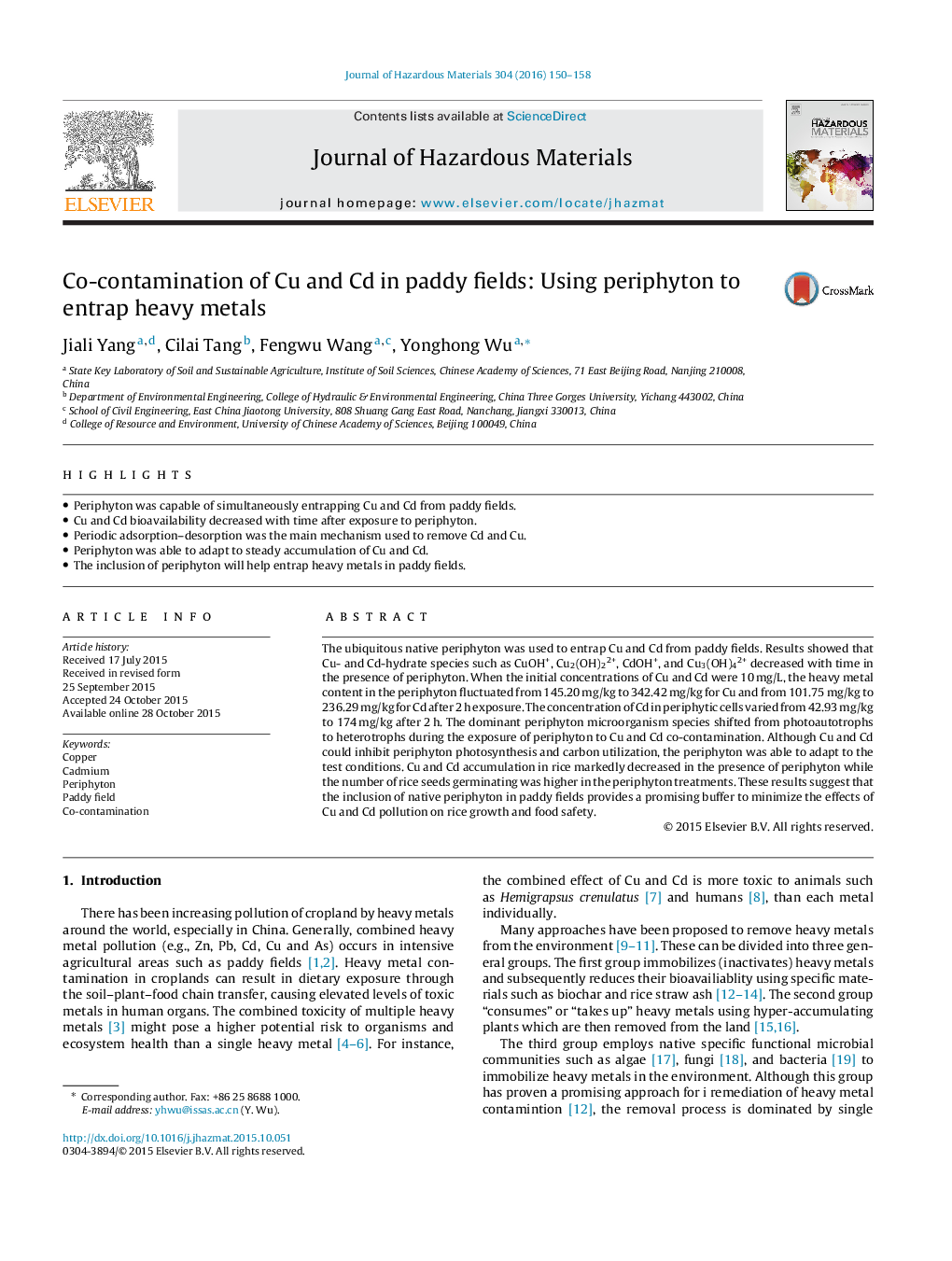| Article ID | Journal | Published Year | Pages | File Type |
|---|---|---|---|---|
| 575469 | Journal of Hazardous Materials | 2016 | 9 Pages |
Abstract
The ubiquitous native periphyton was used to entrap Cu and Cd from paddy fields. Results showed that Cu- and Cd-hydrate species such as CuOH+, Cu2(OH)22+, CdOH+, and Cu3(OH)42+ decreased with time in the presence of periphyton. When the initial concentrations of Cu and Cd were 10Â mg/L, the heavy metal content in the periphyton fluctuated from 145.20Â mg/kg to 342.42Â mg/kg for Cu and from 101.75Â mg/kg to 236.29Â mg/kg for Cd after 2Â h exposure. The concentration of Cd in periphytic cells varied from 42.93Â mg/kg to 174Â mg/kg after 2Â h. The dominant periphyton microorganism species shifted from photoautotrophs to heterotrophs during the exposure of periphyton to Cu and Cd co-contamination. Although Cu and Cd could inhibit periphyton photosynthesis and carbon utilization, the periphyton was able to adapt to the test conditions. Cu and Cd accumulation in rice markedly decreased in the presence of periphyton while the number of rice seeds germinating was higher in the periphyton treatments. These results suggest that the inclusion of native periphyton in paddy fields provides a promising buffer to minimize the effects of Cu and Cd pollution on rice growth and food safety.
Related Topics
Physical Sciences and Engineering
Chemical Engineering
Chemical Health and Safety
Authors
Jiali Yang, Cilai Tang, Fengwu Wang, Yonghong Wu,
